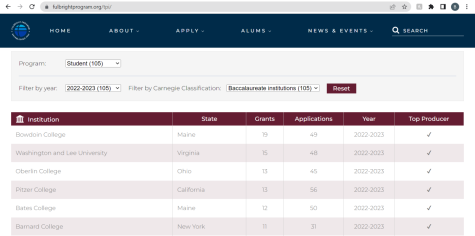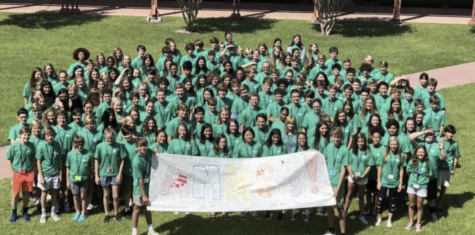How To Build a College List
A short guide on how to create your college application list
Nearly 4,000 public and private institutions are scattered across the United States. Some small, almost magnet size, some massive enough to have entire cities constructed for them. Every college and university in the country has something unique to offer: be it research resources, social scene, or even weather, this guide will outline some of the main aspects of a college to investigate as you begin your application list.
Let’s start with location. A lot goes into this point. Before you make a college list, find the geographic regions you’d prefer to live in. Maybe yours is limited to strictly California, maybe you just want to get away from the South. After you’ve chosen or eliminated certain regions, you can go into the specifics of location.
Weather is a critically undervalued aspect of the college decision. If you catch a cold every time Charleston drops below 70 degrees, applying to a New York school might not be the best idea.
Finally, and perhaps most important, is the urban/suburban/rural decision. In my experience, this is one of the most important choices, as each one offers something unique to my educational experience. I loathed the concrete jungle of USC when I visited, and consequently found myself drawn to schools with nature as a big part of their image (such as Dartmouth and W&L). However, living in a city such as Columbia offers an opportunity to work as a CNA in my undergraduate years. I am still making the decision between city and small town and middle of nowhere college (even with all my decisions in) so no rush. However, take the time to investigate what type of location suits both your educational path and personal preference.
Next is the size of the school. A lot of people look for the “college experience”: Football games, Greek life, etc. This is pretty much always guaranteed by a big school. Therefore, many students looking for this experience narrow their list down to big public state colleges. Big party schools and a great education aren’t mutually exclusive, however. UVA and UNC both offer an excellent college life while consistently ranking in the top 30’s, as does UGA with its top 50 ranking. This might not be for you— I personally applied to schools with a population of about 5 thousand, ranging from Washington and Lee (1.8k) to Brown University (8.9k). As a pre-med, I felt that small class sizes and closer professor relationships were important to me. Additionally, having a tight-knit community was preferable, as it parallels my high school environment. If you do want to go into Greek life but the big schools scare you, check out forums online about people’s experiences with frats and sororities at smaller schools. Davidson, for instance, is not toxic whatsoever in this sphere, as everyone gets a bid and hazing is not part of the culture. It is also wise to reach out to current students about their perception of the school’s social scene. Also take into consideration if the school offers an opportunity to play your sports. USC has club lacrosse, but it’s virtually impossible to make the team. Clemson, on the other hand, has a team that is much easier to make.
Prestige is something that should be considered. If you’re going into engineering, Georgia Tech will stick out on a resume over most other schools. As a finance major, research which schools have the best job placement.
Chase’s school, SMU, has an excellent finance program, with most students going to Goldman Sachs. He said he was drawn to the school’s network and connections to hedge funds, which not many other universities have to offer.
I personally am looking to take a gap year after my undergraduate years and before medical school. A program I am interested in is the Fulbright Program, which is a “flagship international educational exchange program sponsored by the U.S. government.” Washington and Lee is a top producer of Fulbright Grant receivers pretty much every year, so this was once again a unique aspect of the school that lined up with my interests.

Some schools have special programs that are important to look into. Clemson has the National Scholars Program, USC has Top Scholars. Here’s a list of many underrated, prestigious full-ride programs across the US: https://www.reddit.com/r/ApplyingToCollege/comments/azu8o2/change_your_trajectory_full_ride_scholarship/
The alumni network of your school is also a good variable to look into. Branching off of the prestige point, going to a school such as Johns Hopkins for biomedical engineering will likely open tons of doors for research and other post-bachelors opportunities. However, the name shouldn’t be driving your decision. Every school has thousands of programs, and a top school might not have a good program for what you want to do. Emory, for example, has the #1 ranked creative writing program while having world-class medical facilities and research. While this aligns with my interests and career goals, Emory might not be as good of a choice for a business or finance major.
With this “job placement” factor comes a counterargument: Do not blindly follow the sticker statistics that you find posted in bold on the college website. I’ll start with a personal example. Washington and Lee has a shockingly high 91% medical school placement rate, while Emory poses a measly 54%. To give some context, the national percentage of pre-med students accepted to medical school is around 45% each year. What these statistics don’t show is that Washington and Lee has rigorous weed-out classes freshman and sophomore year, that leave only the best to apply in their junior and senior year. Emory, on the other hand, allows everyone to apply to medical school, not implementing a GPA or MCAT minimum unlike other schools. Your best bet is to use College Confidential, Reddit, or other public forums to dissect these suspicious statistical claims.
Finally, and often most importantly, is the financial burden of the school. I’d like to start off by mentioning the difference between “need-blind” and “need-aware” schools. Need-blind schools do not look at your family income as part of their admission process, while need-aware schools take your ability to pay for the college into consideration as they look over your application. Therefore, it is often a good idea to stay aware from “need-aware” schools if you consider yourself low income. Secondly, I’d like to myth-bust a school’s claim that they “meet 100% of a students demonstrated need.” They don’t. Each school calculates their own “expected family contribution,” independent of the number generated by your FAFSA Student Aid Report. This number significantly varies from school to school. You should not only use a net-price calculator before adding a school to your college list, but also look into their aid policies. Dartmouth, Williams, and other schools offer a “no loan” aid package, which will be significantly cheaper than most other institutions. Washington and Lee, the University of Chicago, and Rice University promise full tuition for students whose family income is below $125,000, with typical assets (who knows what that means). Some schools are easier to appeal with, some schools don’t take external scholarships, some schools offer generous merit aid to almost everyone (for example Case Western Reserve University or The University of Rochester). Some public institutions offer in-state tuition for out-of-state students, even without establishing residency requirements. All in all, make an informed decision on which schools to apply to after thoroughly researching the affordability of the college.
I’d like to end this article with a small piece of advice: don’t apply to too many schools. I applied to 22 schools, and spent a TON of time writing essays and submitting applications during my first semester of senior year. While I am incredibly grateful to have received several acceptances, and applied to a vast number of schools so that I could compare aid packages, I am not going to pretend that this decision didn’t take up a great deal of my time. Make a list but don’t overdo it. And, most importantly, remember that you’ll do great things wherever you go. In my opinion, USC has all the resources that Princeton does— it’s entirely up to you how you’ll use them.








